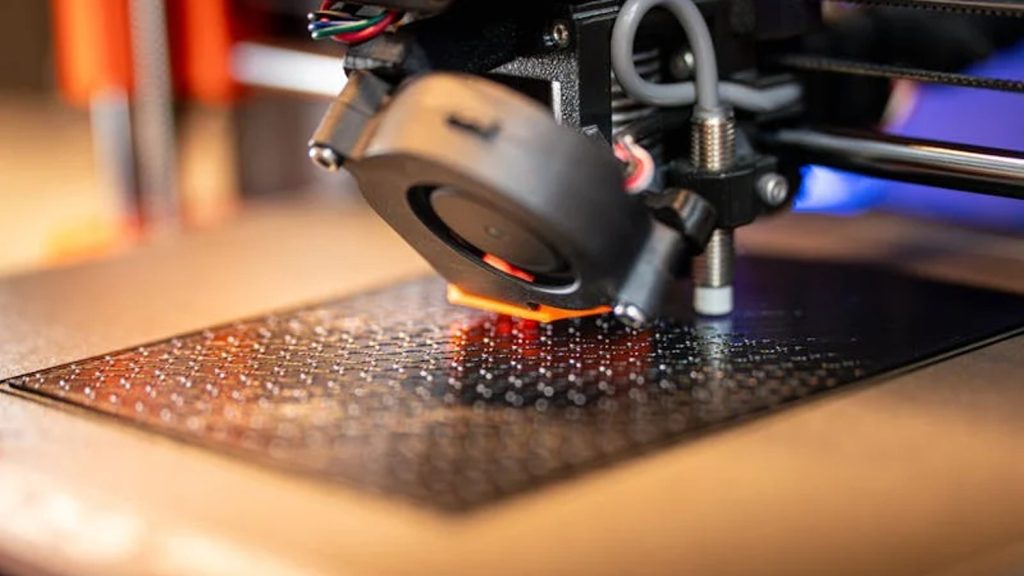Overhyped and failing to deliver, 3D printing hasn’t lived up to its promises. Automation of more traditional manufacturing methods is where the real potential for big progress lies, writes Theo Saville of CloudNC
It’s time to get real: 3D printing sucks. Or rather, it sucks at delivering what we were promised, which was a method for making everything.
As it transpires, 3D printing can’t deliver that. We need to accept not only that 3D printing cannot replace traditional manufacturing processes, but also that the dream of producing what we need to produce with 3D printers, on demand and autonomously, is over.
The issue with 3D printing is simple: market hype has outpaced reality, and while the technology is innovative, it was never the all-encompassing solution it was made out to be. Even as the technology advanced, in fact, fundamental limits remained, which I’ve witnessed first-hand during my career as an engineer and entrepreneur.
Yes, 3D printing offers the advantage of creating complex geometries that traditional methods can’t achieve – but there aren’t as many benefits from creating those kinds of parts as we expected. They just aren’t needed all that often.
In addition, every 3D printing process – whether it’s FDM, stereolithography, or metal printing – comes with significant drawbacks, especially when compared to mainstream manufacturing techniques.
FDM produces parts with poor surface finishes and weak bonds between layers. Stereolithography and PolyJet parts may be detailed, but they are often brittle and costly. Metal printing is immensely expensive, slow and unreliable. All of these methods are pretty inaccurate, no matter what the manufacturers claim. They all involve trade-offs, and those trade-offs are problematic.
So where next?
Today, some 40 years on from its invention, 3D printing remains slow, expensive, and ineffective for mainstream manufacturing – that is, the production of things you actually use day to day.
Even the biggest fleet of 3D printers would not be capable of producing the diverse components that make up most products today, which require various specialised techniques and materials
The use of 3D-printed parts is still limited to niche applications, where the added cost of development and certification can be justified by long-term benefits such as weight reduction or enhanced functionality. However, most organisations aren’t shooting something into space or around a Formula 1 circuit every day.
Even the biggest fleet of 3D printers would not capable of producing the diverse components that make up most products, which require various specialised techniques and materials. That’s why we won’t be 3D printing car doors or consumer electronics anytime soon. The complex multi-step (and, often, multi-company) manufacturing processes that already produce these items are far more efficient and cost-effective at scale.
So, if 3D printing isn’t the future of manufacturing, what is? In my opinion, the answer lies in automating traditional manufacturing processes like CNC machining, injection moulding, punching and pressing, forming, welding and so on.
At my company, CloudNC, we’ve taken a major step towards this goal with CAM Assist, an AI solution that automates 80% of the CNC programming process, and is now in use in hundreds of workshops across the United States.
Significant potential
Unlike 3D printing, which is autonomous by design but limited in practical application, CNC machining has the potential to become just as automated, while retaining the precision and accuracy needed for mainstream manufacturing.
The challenge with CNC machining today is its complexity. Setting up a CNC machine requires skilled labour, from selecting the right tools to programming toolpaths manually. The process is time-consuming, and even small mistakes can lead to scrapped parts and expensive crashes.
We envision a future where much of this set-up work is automated. CAM Assist is already bridging the gap, making it possible to streamline CNC machining to reduce expertise requirements and improve efficiency.
Imagine a machine with hundreds of tools, flexible workholding and software capable of autonomously programming and optimising most of the machining process. Such technology would allow manufacturers to achieve tight tolerances and perfect quality with minimal human intervention, delivering parts the next day that with today’s practices might take weeks or even months.
We’re not there yet, but we’re making progress. We’re working on automating multi-axis machining, handling complex materials and integrating automatic feeds, speeds and in-process inspections. In short, the next great leap forward lies in the autonomous CNC machine, not the 3D printer.
It’s may not be as neat. It may not capture the public imagination with cool images of wacky designs. But it will have an extraordinary and practical impact on modern manufacturing – or, at least, on those ‘boring’, multi-trillion-dollar aspects of modern manufacturing.
About the author:
Theo Saville is co-founder and CEO of CloudNC, a UK-based technology company on a mission to enable single-click manufacturing.
CloudNC has raised over $75m in VC funding and is aiming to reinvent the precision manufacturing sector through the use of artificial intelligence technologies.
This article first appeared in DEVELOP3D Magazine
DEVELOP3D is a publication dedicated to product design + development, from concept to manufacture and the technologies behind it all.
To receive the physical publication or digital issue free, as well as exclusive news and offers, subscribe to DEVELOP3D Magazine here






